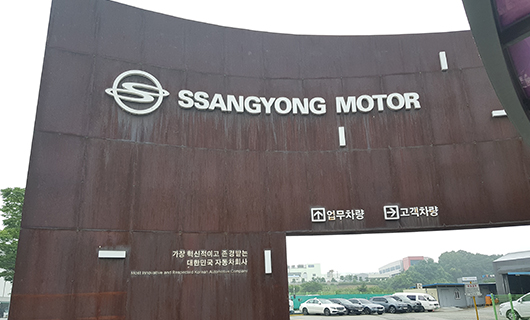As Ssang Yong Motor Co. went bankrupt, Mahindra’s Ltd dream to become a global maker of sport’s utility vehicles (SUV) has hit a major hurdle.
Mahindra acquired the South Korean SUV maker after the 2007-2008 global financial recession when Indian and Chinese companies were vying on the global firms to access new technologies and to have a global footprint. At the same time, TATA motor’s acquired British luxury carmaker Jaguar Land Rover and Bajaj Auto Ltd and invested in Austrian bike maker KTM AG.
The idea was to build upon the success gained from the launch of Bolero, Scorpio, and XUV500 (SUV’s) and made its own mark in premium and bigger SUV segments in India, along with building scale for Ssang Yong to enter several lucrative global export markets as opined by an executive on condition of anonymity.
Ten-year ownership by Mahindra of Ssang Yong not only failed to deliver its SUV delivery promise but also turned as a liability to the Mumbai-based firm as Mahindra continued to make new investments without adequate returns.
Meanwhile, at home, Mahindra lost a substantial amount of market share in the SUV segment amid intensifying competition from the industry rivals like Maruti Suzuki India Ltd and Hyundai Motor India Ltd.
Mahindra’s ten-year ownership of. Ssang Yong shouldn’t just be viewed in Black and White. Mahindra launched Rixton and Tivoli based XUV300 SUV in India. Whereas Ssang Yong Rexton failed as a brand failed to make its impact and value in the market initially. It remains unclear why M&M invested in it” as cited by an anonymous second person.
It has been a disastrous idea to sell three-wheelers and entry-level vehicles along with SUVs under the same brand name Mahindra. When compared to Maruti Suzuki clearly demarcating the branding and retail strategy of creating separate Arena and Nexa retail outlets to sell mass and premium models.
Many executives opined that there was too much stretch of the bandwidth of Mahindra to spread along with several of its automotive businesses such as electric vehicles, two-wheelers, and shared mobility as a result it lost its competitive hold in the SUV segment and late to party with its sub-4-meter compact SUV and also significant R&D went into developing a range of petrol engines for Bharat stage-IV emission norms.
Besides the compact SUV Tivoli as the only successful model, Ssang Yong was suffered from serious gasps in its product portfolio, inefficient cost structure, limited capacity of petrol engines, and delayed entry into the US.
Both the firms were in talks on setting up the low-cost production of the SUVs in China to cater to the largest passenger car market. But this plan and entry into the US never materialized, as opined by the third person.
While still, Mahindra was planning to bet Ssang Yong till February 2020, when it started the rescue plan with a tenure of 3 years involving fresh funding of up to 500 billion Korean won, it was clear that the pandemic hit hard on the parent outlook. Following this scenario, Mahindra’s earnings in the March quarter went on loss, where the Korean unit accounted for 80% losses. M&M decided to cede the control of Ssang Yong following this.
Hard hit by the pandemic, Ssang Yong continued to incur losses, throughout the March, June & September quarters. Which has accumulated operating losses of 309 billion won ( 2,100 Crore) in the nine months to September despite rising the Fixed costs. M&M refused to comment on the latest developments as of now.

